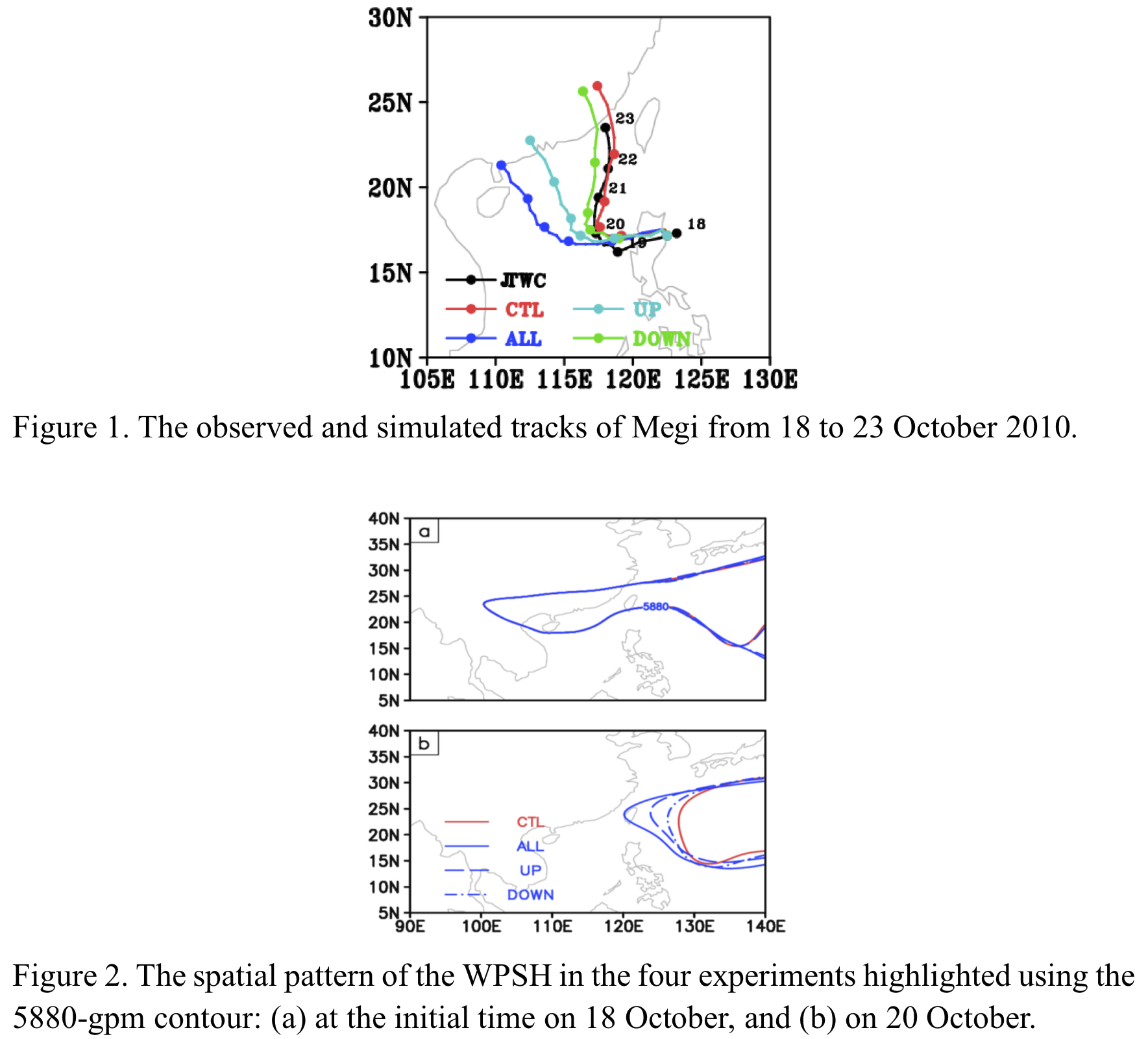Graphical Abstract
Huang, Q., X. Ge, and M. Peng, 2020: Impacts of an upper-level easterly wave on the sudden track change of Typhoon Megi (2010). J. Meteor. Soc. Japan, 98, 1335-1352.
https://doi.org/10.2151/jmsj.2020-069
Early Online Release
Graphical Abstract
NEW
Plain Language Summary:
The Advanced Weather Research and Forecasting (WRF-
ARW) model is used to investigate possible influences of a predominantly upper-level
easterly wave (EW) on Typhoon Megi’s (2010) sharp northward turn on 20 October,
2010 after passing over the Philippines. In the presence of the upper-level eastly wave
(EW), the simulation reasonably well produced the sudden track change of Megi.

Highlights:
- An upper-level EW slows down Megi’s westward propagation to locate in the eastern semicircle of the nearby monsoon gyre, by which the enhanced southerly steering flow leads to a sharp northward turn.
- The cyclonic vorticity induced by the middle-level convergence erodes the western flank of the western North Pacific Subtropical High and thus changes the steering flow.






